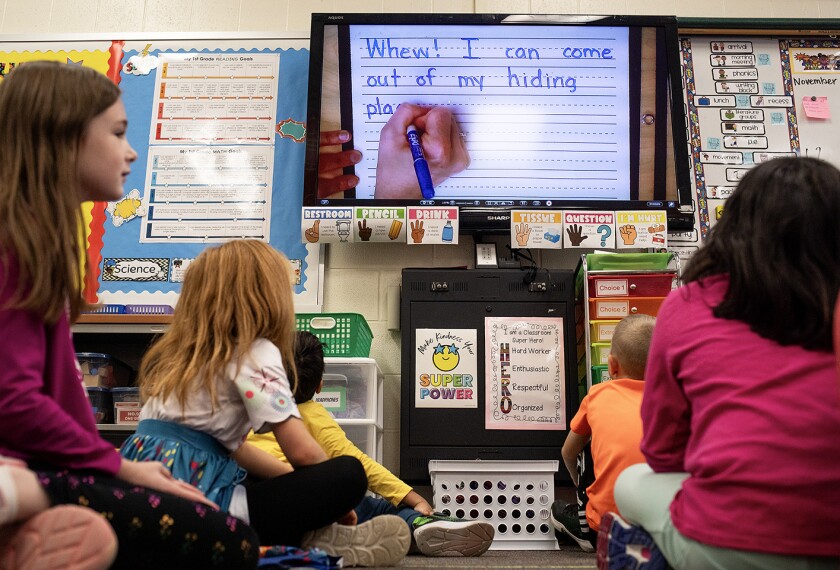Frustrated by textbook shortages and book-ordering delays, some schools are now buying into programs that offer laptop computers loaded with digital versions of state-approved textbooks.
The 4,000-student Forney Independent School District in Texas, located just outside Dallas, was one of the first to sign up for a program spearheaded by IBM and Vital Source Technologies that offers schools the option of buying laptops that can be customized with digital versions of state-approved textbooks.
The district, which has been growing at an annual rate of 25 percent for the past four years, making it one of the fastest-growing districts in Texas, has long had to scramble to provide enough textbooks for its students, according to Roger Geiger, the district’s director of technology.
“We can grow 15 to 20 percent over the summer,” Mr. Geiger said. “And it can be a time-consuming process to order textbooks [in the fall].”
For the current school year, for instance, the district didn’t receive many of its textbooks until February, he said.
Starting next fall, the district will be piloting the “e-textbook” program at the 392-student Johnson Elementary School. If school officials see improved test scores and receive positive feedback from teachers, pupils, and parents, the district intends to expand the program to serve all students in grades 5-12 by the 2006- 07 school year, Mr. Geiger said.
The International Business Machines Corp., based in Armonk, N.Y., is not the only company trying to fill the void created by textbook shortages.
Pearson Education, the world’s largest publisher of educational materials, has been producing digital textbooks on CD-ROMs for nearly three years and was not surprised when a growing number of school districts began showing interest in the digital books.
“I think it’s an emerging trend,” said Jeff Ikler, the executive vice president of Pearson Education’s school group, based in Upper Saddle River, N.J. “We’re starting to see it bubble up across the country.”
High Cost, Other Problems
But electronic textbooks are not for every school, experts point out. The hardware needed to run digital textbooks is still relatively expensive, they say.
The Forney school district, for example, is paying close to $1,300 for each of the 100 laptops it is using in the pilot program at Johnson Elementary School. Those laptops, though, can each be loaded with literally hundreds of virtual books.
Frank Daniels, the president and chief executive officer of Vital Source Technologies, based in Raleigh, N.C., said that one of the major challenges for schools is not only the cost of the laptops, but also a lack of state funding for digital-textbook purchases.
Mr. Daniels said that of the 21 states with a statewide adoption process for printed textbooks, few directly support spending for electronic textbooks, making the financial burden on schools high.
There are also technical issues to consider, said Maureen DiMarco, a senior vice president of Houghton- Mifflin Co., located in Boston, who served as California’s secretary of education from 1991 to 1996. Many older teachers are unwilling to use digital technology because they’ve found it to be unreliable, she said.
“If your link doesn’t work or the software fails, you don’t want 30 students waiting,” she said. “It’s a loss of precious instructional time.”
Other issues include equity and access for low-income students, she added.
IBM officials are trying to address some of the problems by making their laptops more durable and offering technical support. The company offers an internal sensory system in its laptops so that when a machine senses that it’s falling, it deploys an airbag around the hard drive.
At the 1,350-student North Broward Preparatory Schools, a private pre-K-12 campus in Coconut Creek, Fla., all 6th through 12th graders are now required to have laptop computers. The school has a complete digital inventory of textbooks that have been used in all its classes for more than a year.
Lisa Villalobos, the high school principal there, has found that the digital textbooks are not as simple as some publishers would like schools to believe.
Many of the school’s chemistry teachers found the digital books helpful because students could perform experimental labs, she said, but some teachers said it was easier for students to go off task by playing games, instant-messaging classmates, or sending e-mails.




